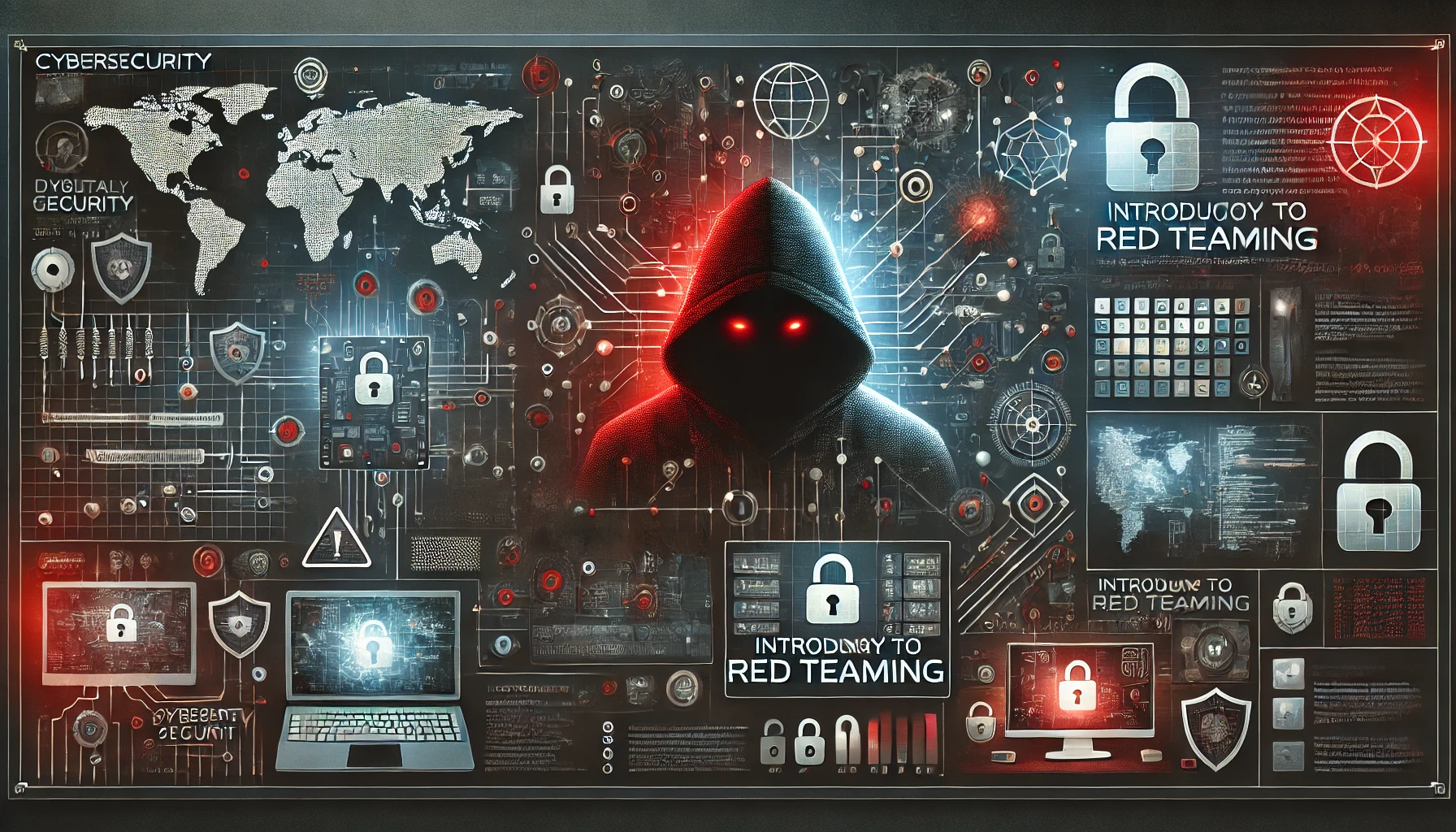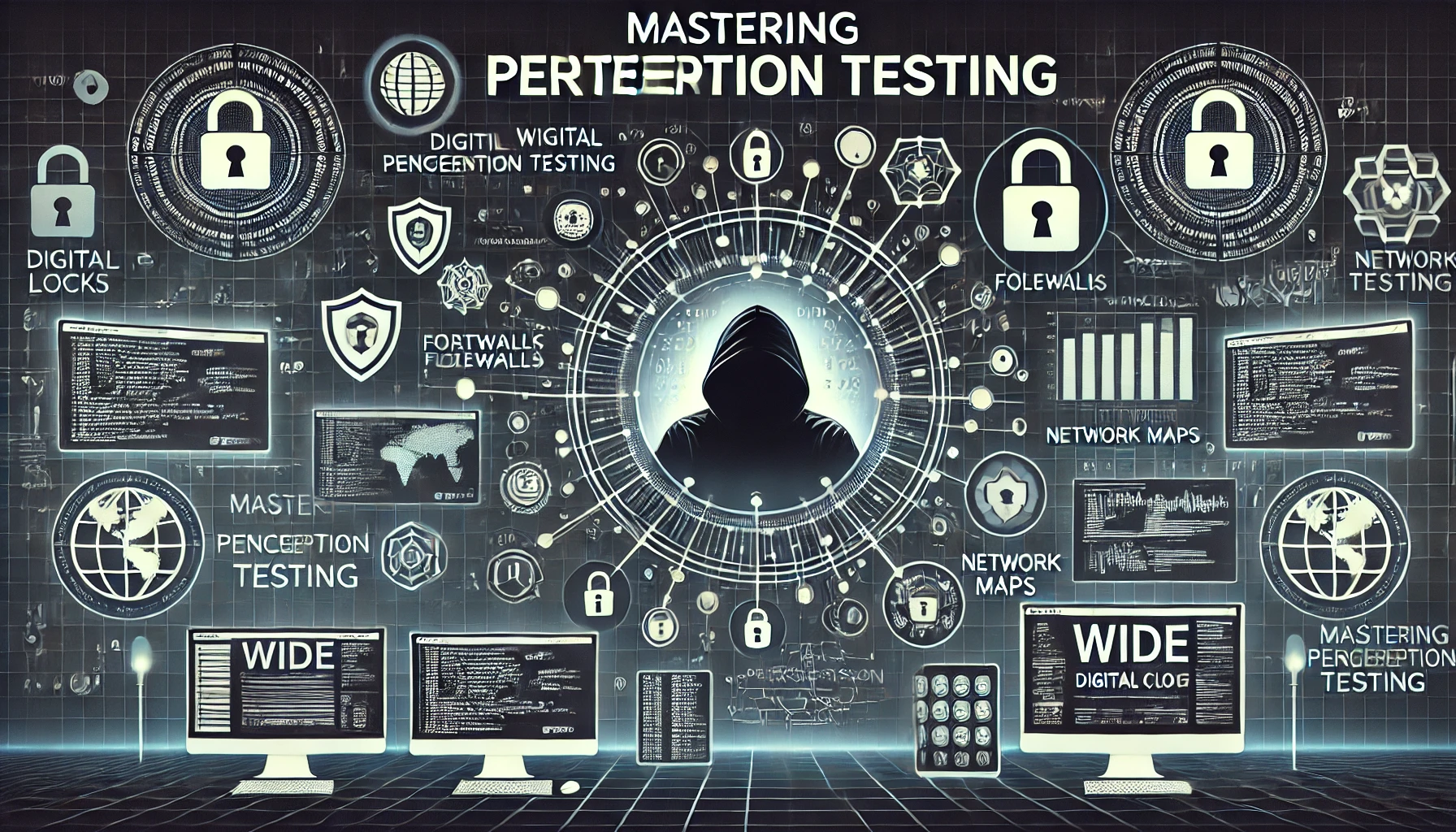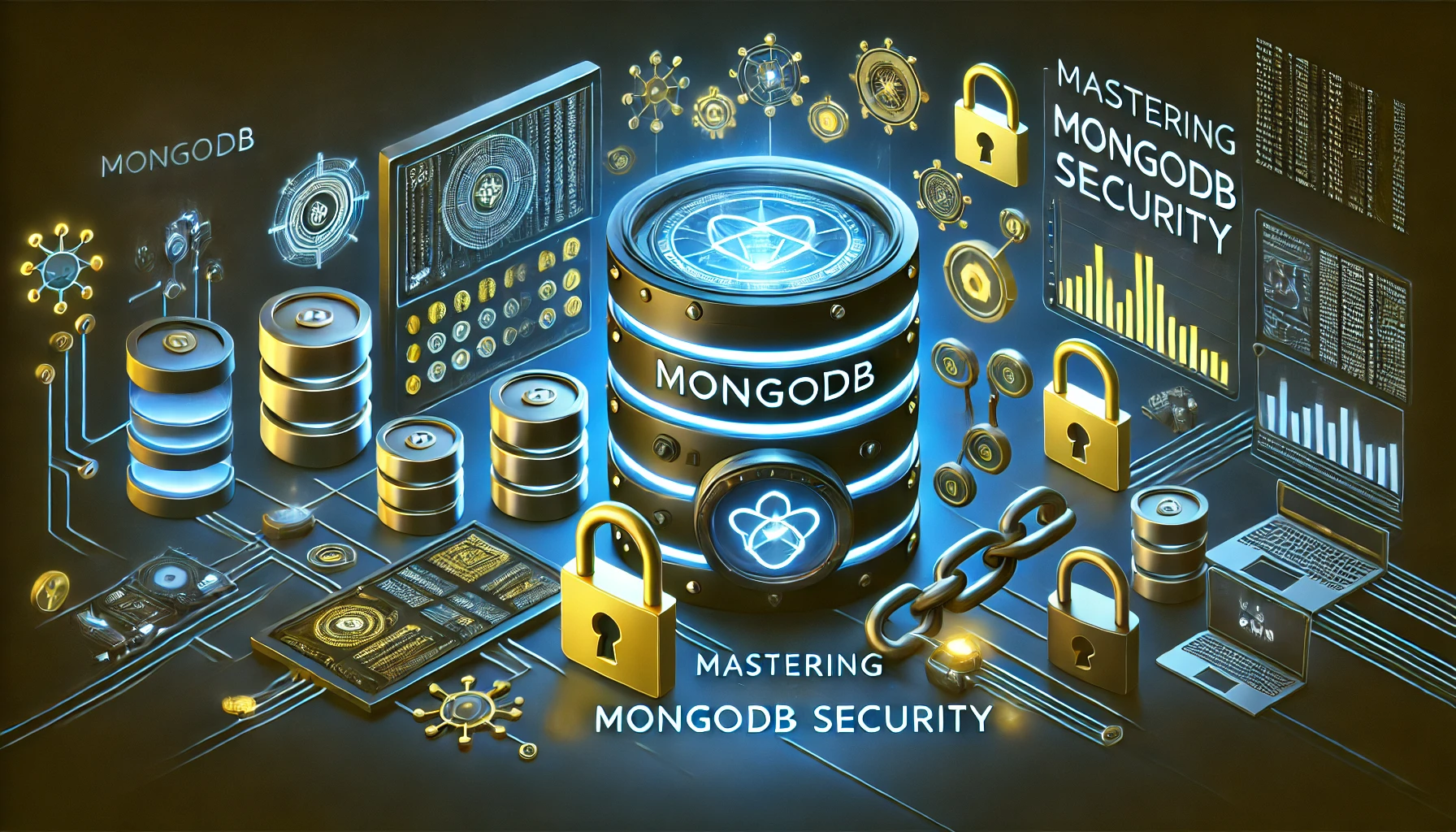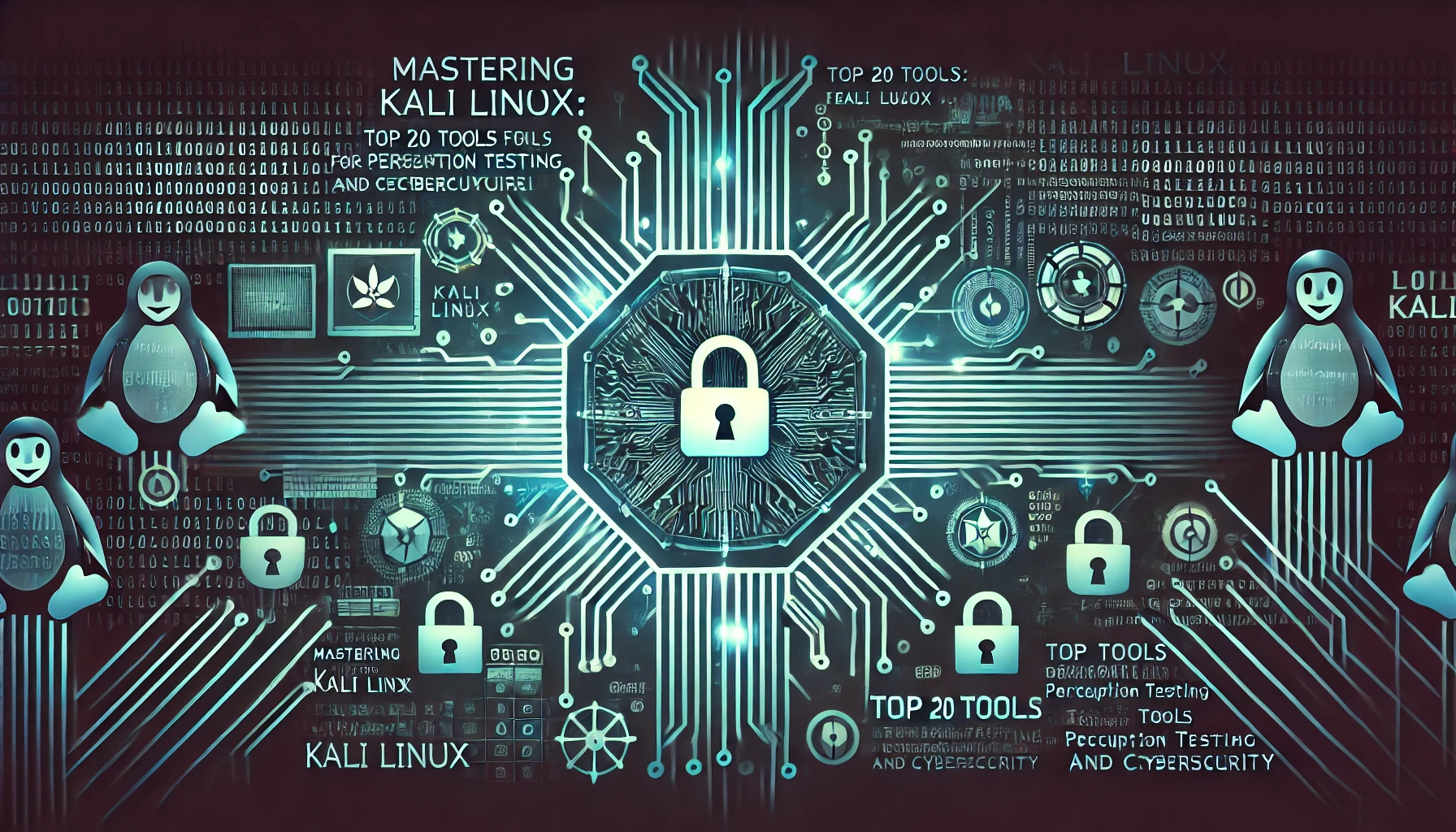
As a cybersecurity expert with extensive experience in offensive security, I’ve witnessed firsthand the pivotal role that Red Teaming plays in fortifying an organization’s defenses. This comprehensive guide delves deep into the world of Red Teaming, providing detailed insights into methodologies, frameworks, tools, and best practices. Whether you’re a seasoned professional or new to the field, this guide aims to enhance your understanding of adversarial simulation and its critical importance in modern cybersecurity.
1. Introduction to Red Teaming
1.1 Understanding Red Teaming
Red Teaming is a full-scope, multi-layered attack simulation designed to measure how well an organization’s people, networks, applications, and physical security controls can withstand an attack from a real-life adversary. It goes beyond traditional penetration testing by emulating the tactics, techniques, and procedures (TTPs) of advanced threat actors.
Key Characteristics:
- Adversarial Simulation: Mimics real-world attack scenarios.
- Goal-Oriented: Focuses on achieving specific objectives, such as data exfiltration.
- Covert Operations: Often conducted without the knowledge of the organization’s defenders (Blue Team) to test detection and response capabilities.
1.2 The Evolution of Red Teaming in Cybersecurity
Originally rooted in military practices, Red Teaming has evolved in the cybersecurity realm to address the complexities of modern threat landscapes. As cyber attacks become more sophisticated, organizations require more advanced methods to test their defenses.
Historical Milestones:
- Military Origins: Used for testing strategies and tactics.
- Adoption in Cybersecurity: Transitioned to IT to test digital defenses.
- Integration with Blue Teams: Leading to the development of Purple Teaming.
1.3 Difference Between Red Teaming, Penetration Testing, and Blue Teaming
- Red Teaming: Simulates real-world attacks over extended periods, testing all aspects of security.
- Penetration Testing: Focuses on finding vulnerabilities in specific systems or applications within a defined scope and time frame.
- Blue Teaming: Refers to the defensive security team responsible for protecting the organization’s assets.
2. The Philosophy and Objectives of Red Teaming
2.1 Emulating Advanced Persistent Threats (APTs)
Red Teams strive to replicate the behaviors of APTs, which are sophisticated, stealthy, and persistent attackers. This involves:
- Long-Term Engagements: Extending over weeks or months.
- Advanced Techniques: Utilizing zero-day exploits and custom malware.
- Stealth Operations: Avoiding detection by security controls.
2.2 Testing Detection and Response Capabilities
The effectiveness of an organization’s security is not only in preventing breaches but also in detecting and responding to them promptly.
Objectives:
- Assessing SOC Effectiveness: Evaluating Security Operations Center (SOC) processes.
- Incident Response Testing: Measuring the organization’s ability to respond to threats.
- Improving Monitoring Tools: Identifying gaps in SIEM and logging mechanisms.
2.3 Improving Organizational Security Posture
Red Teaming provides actionable insights to enhance security measures.
- Identifying Weaknesses: In people, processes, and technology.
- Enhancing Policies and Procedures: Recommending improvements.
- Raising Security Awareness: Highlighting the importance of security at all levels.
3. Red Team Methodologies and Frameworks
3.1 MITRE ATT&CK Framework
A globally accessible knowledge base of adversary tactics and techniques based on real-world observations.
Components:
- Tactics: The adversary’s goals during an attack.
- Techniques: How adversaries achieve their tactical objectives.
- Procedures: Specific implementation methods.
Usage:
- Threat Modeling: Understanding potential attack vectors.
- Gap Analysis: Identifying missing security controls.
- Adversary Emulation Plans: Designing Red Team operations.
3.2 Lockheed Martin Cyber Kill Chain
A model that outlines the stages of a cyber attack.
Phases:
- Reconnaissance
- Weaponization
- Delivery
- Exploitation
- Installation
- Command and Control (C2)
- Actions on Objectives
Application:
- Attack Lifecycle Understanding: Mapping Red Team activities.
- Defense Strategies: Developing countermeasures for each phase.
3.3 Threat Modeling Techniques
Systematic analysis of potential threats to identify vulnerabilities.
Methods:
- STRIDE Model: Spoofing, Tampering, Repudiation, Information Disclosure, Denial of Service, Elevation of Privilege.
- DREAD Model: Damage, Reproducibility, Exploitability, Affected Users, Discoverability.
Benefits:
- Prioritizing Risks: Focusing on high-impact vulnerabilities.
- Designing Security Controls: Tailoring defenses to specific threats.
4. Legal and Ethical Considerations
4.1 Rules of Engagement (RoE)
A formal agreement outlining the scope, limitations, and expectations of the Red Team engagement.
Key Elements:
- Scope Definition: Systems, networks, and applications included.
- Authorized Activities: Techniques permitted during the assessment.
- Exclusions: Systems or methods that are off-limits.
- Communication Plan: Points of contact and incident escalation procedures.
4.2 Legal Compliance and Regulations
Ensuring all activities comply with legal standards.
Considerations:
- Data Protection Laws: GDPR, HIPAA, etc.
- Consent Requirements: Obtaining necessary permissions.
- Third-Party Involvement: Managing risks related to vendors and partners.
4.3 Ethical Guidelines and Professional Conduct
Adhering to ethical standards to maintain integrity and professionalism.
Principles:
- Confidentiality: Protecting sensitive information.
- Non-Disclosure Agreements (NDAs): Binding agreements to safeguard data.
- Professional Responsibility: Avoiding conflicts of interest and malicious activities.
5. Planning a Red Team Engagement
5.1 Defining Scope and Objectives
Clearly outlining what the Red Team aims to achieve.
Steps:
- Objective Setting: Aligning with organizational goals.
- Target Identification: Specifying systems and assets.
- Success Criteria: Defining what constitutes a successful engagement.
5.2 Stakeholder Communication
Engaging with key personnel to ensure alignment and awareness.
Strategies:
- Executive Buy-In: Securing support from leadership.
- Coordination with IT Teams: Minimizing disruptions.
- Regular Updates: Keeping stakeholders informed of progress.
5.3 Resource Allocation and Team Composition
Assembling the right team with appropriate skills.
Considerations:
- Skill Sets: Offensive security experts, social engineers, developers.
- Team Roles: Lead, operators, support staff.
- Toolkits and Infrastructure: Preparing necessary hardware and software.
6. Reconnaissance and Information Gathering
6.1 Open Source Intelligence (OSINT)
Collecting publicly available information about the target.
Techniques:
- Domain Reconnaissance: WHOIS data, DNS records.
- Social Media Mining: Employee profiles, company posts.
- Public Records: Financial filings, patents, press releases.
Tools:
- Maltego
- Recon-ng
- theHarvester
6.2 Network Scanning and Enumeration
Identifying live hosts, open ports, and services.
Processes:
- Active Scanning: Using tools like Nmap for port scanning.
- Banner Grabbing: Determining service versions.
- Vulnerability Scanning: Identifying known weaknesses.
Considerations:
- Stealth Scanning: Minimizing detection by IDS/IPS.
- Timing and Frequency: Adjusting scans to avoid network disruption.
6.3 Social Engineering Reconnaissance
Gathering information through human interaction.
Methods:
- Pretexting: Creating believable scenarios to elicit information.
- Phishing Campaigns: Crafting targeted emails.
- Physical Reconnaissance: Observing physical security measures.
7. Initial Access Techniques
7.1 Phishing Campaigns
Deceptive emails designed to trick recipients into revealing information or executing malicious code.
Types:
- Spear Phishing: Targeted at specific individuals.
- Whaling: Aimed at high-profile executives.
- Clone Phishing: Replicating legitimate emails with malicious links.
Best Practices:
- Email Crafting: Personalization to increase credibility.
- Payload Delivery: Embedding malicious attachments or links.
- Evasion Techniques: Bypassing email security filters.
7.2 Exploiting Public-Facing Applications
Targeting vulnerabilities in web applications and services.
Common Vulnerabilities:
- SQL Injection
- Cross-Site Scripting (XSS)
- Remote Code Execution (RCE)
Exploitation Steps:
- Identifying Vulnerabilities: Using tools like Burp Suite.
- Developing Exploits: Crafting payloads to exploit weaknesses.
- Gaining Access: Establishing footholds on servers.
7.3 Supply Chain Attacks
Compromising third-party vendors or software to infiltrate the target.
Approaches:
- Software Tampering: Inserting malicious code into legitimate software updates.
- Third-Party Access Abuse: Exploiting trusted connections.
- Hardware Compromise: Modifying physical components.
Notable Examples:
- SolarWinds Attack
- CCleaner Compromise
8. Persistence and Lateral Movement
8.1 Establishing Backdoors and C2 Channels
Maintaining access to compromised systems.
Techniques:
- Web Shells: Deploying scripts to execute commands remotely.
- Scheduled Tasks and Services: Creating persistent mechanisms.
- Domain Generation Algorithms (DGAs): Using algorithmically generated domains for communication.
Command and Control (C2) Frameworks:
- Cobalt Strike
- Metasploit Framework
- Empire
8.2 Credential Harvesting and Privilege Escalation
Obtaining and using credentials to escalate privileges.
Methods:
- Password Dumping: Extracting hashes from memory or files.
- Pass-the-Hash/Pass-the-Ticket: Using credential artifacts to authenticate.
- Exploiting Misconfigurations: Abusing weak permissions or services.
Tools:
- Mimikatz
- Responder
- BloodHound
8.3 Moving Laterally Within Networks
Expanding access to additional systems and domains.
Strategies:
- Network Mapping: Understanding the network topology.
- Pivoting: Using one compromised system to attack others.
- Exploiting Trust Relationships: Leveraging existing connections.
Considerations:
- Stealth Movement: Avoiding detection by monitoring systems.
- Traffic Encryption: Using protocols like SSH or HTTPS for communications.
9. Privilege Escalation and Domain Dominance
9.1 Windows and Linux Privilege Escalation Techniques
Gaining higher-level access on compromised systems.
Windows Techniques:
- Exploiting Vulnerable Drivers
- Abusing Service Permissions
- DLL Hijacking
Linux Techniques:
- SUID/GUID Executables
- Exploiting Cron Jobs
- Kernel Exploits
Tools and Resources:
- Windows Exploit Suggester
- Linux Privilege Escalation Scripts
9.2 Active Directory Exploitation
Targeting Microsoft’s directory service for domain control.
Attack Vectors:
- Kerberoasting: Extracting service account hashes.
- Golden Ticket Attacks: Forging Kerberos tickets.
- DCShadow: Manipulating domain controller data.
Tools:
- Impacket
- PowerView
- ASREPRoast
9.3 Maintaining Domain Persistence
Ensuring long-term access to domain resources.
Techniques:
- Skeleton Key Implantation
- Creating Rogue Domain Controllers
- Modifying Group Policy Objects (GPOs)
Defensive Evasion:
- Timestamp Modification
- Log Clearing
- Process Injection
10. Exfiltration and Impact
10.1 Data Exfiltration Methods
Stealing sensitive data without detection.
Methods:
- Steganography: Hiding data within other files.
- Protocol Abuse: Using DNS, ICMP for data transfer.
- Cloud Storage Misuse: Uploading to services like Dropbox.
Tools:
- Exfiltration Scripts
- Data Compression and Encryption Utilities
10.2 Covering Tracks and Anti-Forensics
Removing evidence of compromise.
Techniques:
- Log Manipulation: Deleting or altering logs.
- File Time Stomping: Changing file timestamps.
- Process Hollowing: Hiding malicious processes.
Tools:
- Clearev (Metasploit Module)
- Timestomp
10.3 Simulating Ransomware and Destructive Actions
Assessing the organization’s readiness for destructive attacks.
Approaches:
- Encrypting Data Copies: Without affecting actual data.
- Denial of Service Simulation: Testing response procedures.
- Physical Destruction Simulation: Evaluating disaster recovery plans.
Ethical Considerations:
- Avoiding Actual Damage: Ensuring operations do not harm systems.
- Clear Communication: Defining boundaries in the RoE.
11. Red Team Tools and Technologies
11.1 Command and Control Frameworks
Platforms for managing compromised systems.
Popular Frameworks:
- Cobalt Strike: Professional-grade tool with advanced features.
- Metasploit Framework: Open-source tool for exploit development.
- Empire: PowerShell and Python post-exploitation agent.
Features:
- Payload Generation
- Listener Management
- Session Handling
11.2 Exploitation Tools
Software used to exploit vulnerabilities.
Examples:
- Exploit DB and Metasploit Modules: Ready-made exploits.
- Custom Exploits: Developed for zero-day vulnerabilities.
- Fuzzers: Tools like AFL for discovering new vulnerabilities.
11.3 Automation and Scripting
Enhancing efficiency through automation.
Languages:
- Python
- PowerShell
- Bash
Applications:
- Automated Reconnaissance Scripts
- Custom Payload Generators
- Bulk Data Processing
12. Reporting and Communication
12.1 Documentation of Findings
Detailed recording of activities and results.
Components:
- Technical Details: Vulnerabilities exploited, techniques used.
- Evidence Collection: Screenshots, logs, and artifacts.
- Attack Path Diagrams: Visual representation of the engagement.
12.2 Executive Summaries and Technical Reports
Tailoring reports to different audiences.
Executive Summaries:
- High-Level Overview: Focus on business impact.
- Recommendations: Strategic advice for leadership.
Technical Reports:
- Detailed Analysis: In-depth technical information.
- Remediation Steps: Specific guidance for IT teams.
12.3 Presenting to Stakeholders
Effectively communicating results.
Best Practices:
- Clarity and Conciseness: Avoiding technical jargon when unnecessary.
- Visual Aids: Using charts and diagrams.
- Actionable Insights: Providing clear next steps.
13. Red Team Operations Management
13.1 Operational Security (OPSEC) for Red Teams
Protecting the Red Team’s plans and activities.
Measures:
- Secure Communication Channels: Encrypted messaging.
- Anonymity Techniques: Using VPNs, proxies.
- Compartmentalization: Need-to-know basis for information sharing.
13.2 Collaboration and Team Coordination
Ensuring effective teamwork.
Tools:
- Project Management Software: Jira, Trello.
- Version Control Systems: Git for code and scripts.
- Communication Platforms: Slack, Microsoft Teams (secured).
13.3 Continuous Improvement and Lessons Learned
Enhancing future engagements.
Processes:
- Post-Engagement Reviews: Analyzing successes and failures.
- Skill Development: Ongoing training and certifications.
- Updating Methodologies: Adapting to new threats and technologies.
14. Defensive Countermeasures and Blue Team Collaboration
14.1 Detection and Response Strategies
Helping organizations improve their defenses.
Recommendations:
- Implementing Advanced Monitoring: SIEM, EDR solutions.
- Enhancing Alerting Mechanisms: Fine-tuning thresholds and rules.
- Regular Updates and Patching: Addressing known vulnerabilities.
14.2 Purple Teaming Exercises
Collaborative efforts between Red and Blue Teams.
Benefits:
- Knowledge Sharing: Red Team teaches attack methods; Blue Team shares defense strategies.
- Real-Time Feedback: Immediate adjustments and improvements.
- Strengthening Defenses: Holistic approach to security.
14.3 Enhancing Security Controls Based on Red Team Findings
Applying lessons learned.
Actions:
- Policy Revisions: Updating security policies and procedures.
- Technical Hardening: Strengthening configurations and settings.
- User Training Programs: Educating staff on security awareness.
15. Case Studies of Red Team Engagements
15.1 Case Study 1: Financial Institution Red Team Assessment
Scenario:
- Objective: Test the resilience of online banking systems.
- Approach: Phishing campaigns, web application exploits.
- Outcome: Identified critical vulnerabilities leading to unauthorized fund transfers.
Lessons Learned:
- Importance of Multi-Factor Authentication
- Need for Regular Web Application Assessments
15.2 Case Study 2: Red Teaming in Critical Infrastructure
Scenario:
- Objective: Assess security of a power grid control system.
- Approach: Physical intrusion, network exploitation.
- Outcome: Gained control over critical systems, highlighting significant risks.
Lessons Learned:
- Necessity of Physical Security Measures
- Segmentation of Operational Technology (OT) Networks
15.3 Case Study 3: Simulating Insider Threats
Scenario:
- Objective: Evaluate internal threat detection capabilities.
- Approach: Insider with legitimate access escalating privileges.
- Outcome: Exfiltrated sensitive data without detection.
Lessons Learned:
- Implementing User Behavior Analytics (UBA)
- Strengthening Access Controls and Monitoring
16. Certifications and Professional Development
16.1 Notable Red Team Certifications
- Offensive Security Certified Professional (OSCP)
- GIAC Penetration Tester (GPEN)
- Certified Red Team Professional (CRTP)
- Certified Red Team Expert (CRTE)
16.2 Training Resources and Programs
- SANS Institute Courses
- Offensive Security Training
- Advanced Red Teaming Workshops
16.3 Building a Career in Red Teaming
Steps:
- Develop Core Skills: Networking, programming, security fundamentals.
- Gain Practical Experience: Labs, Capture the Flag (CTF) competitions.
- Network with Professionals: Attend conferences, join forums.
17. Future Trends in Red Teaming
17.1 Adversarial Artificial Intelligence
- AI-Powered Attacks: Using machine learning to develop advanced threats.
- Counter-AI Measures: Developing defenses against AI-driven attacks.
17.2 Red Teaming in Cloud Environments
- Cloud-Specific Vulnerabilities: Misconfigurations, insecure APIs.
- Cloud Penetration Tools: AWS, Azure, and GCP assessment tools.
17.3 Regulatory Changes Impacting Red Team Operations
- Data Protection Regulations: Impact on data handling during engagements.
- Cybersecurity Frameworks: NIST, ISO influencing Red Team methodologies.
18. Conclusion
Red Teaming is an essential component of a robust cybersecurity strategy. By emulating sophisticated adversaries, organizations can identify and remediate weaknesses before they are exploited. This exhaustive guide provides a comprehensive roadmap for understanding and implementing effective Red Team operations. As the threat landscape continues to evolve, staying ahead requires continuous learning, adaptation, and collaboration between offensive and defensive security professionals.
19. Frequently Asked Questions (FAQs)
Q1: What is the main difference between Red Teaming and Penetration Testing?
A1: Red Teaming is a full-scope, adversarial simulation that tests all aspects of an organization’s defenses over an extended period, often without the knowledge of the defenders. Penetration Testing is more focused, aiming to identify vulnerabilities in specific systems or applications within a defined scope and time frame.
Q2: How long does a typical Red Team engagement last?
A2: Engagements can vary but typically last from several weeks to several months, depending on the objectives and scope defined in the Rules of Engagement.
Q3: Is Red Teaming legal?
A3: Yes, when conducted with proper authorization and within the legal framework. It requires clear agreements, such as the Rules of Engagement, and adherence to all applicable laws and regulations.
Q4: What skills are essential for a Red Team member?
A4: Essential skills include a deep understanding of networking, operating systems, programming, exploit development, social engineering, and familiarity with various security tools and frameworks.
Q5: How can organizations prepare for a Red Team engagement?
A5: Organizations should establish clear objectives, define the scope, communicate with stakeholders, and ensure that all legal and ethical considerations are addressed in the Rules of Engagement.
20. References and Further Reading
- MITRE ATT&CK Framework: https://attack.mitre.org/
- Lockheed Martin Cyber Kill Chain: https://www.lockheedmartin.com/en-us/capabilities/cyber/cyber-kill-chain.html
- “Red Team: How to Succeed By Thinking Like the Enemy” by Micah Zenko.
- NIST Special Publication 800-115: Technical Guide to Information Security Testing and Assessment
- OWASP Testing Guide: https://owasp.org/www-project-web-security-testing-guide/
- SANS Institute Reading Room: Red Teaming and Penetration Testing Resources
Stay Connected with Secure Debug
Need expert advice or support from Secure Debug’s cybersecurity consulting and services? We’re here to help. For inquiries, assistance, or to learn more about our offerings, please visit our Contact Us page. Your security is our priority.
Join our professional network on LinkedIn to stay updated with the latest news, insights, and updates from Secure Debug. Follow us here







